The automotive market is brimming with intriguing options, especially when it comes to compact SUVs. Today, we delve into a comparison between the Suzuki S-Cross and the Volkswagen T-Roc, both of which have made significant strides in 2024. Each SUV carries distinct features, but which one better aligns with the desires of modern drivers? Let's explore the technical aspects and innovations of both vehicles.
Suzuki S-Cross vs VW T-Roc – Performance, range & efficiency compared
Both models have their strengths – but which one suits you more?
Compare performance, efficiency, price and space directly: Suzuki S-Cross or VW T-Roc?
Design and Dimensions
The Suzuki S-Cross boasts a robust and muscular design, measuring 4300mm in length, 1785mm in width, and standing 1580mm tall. Its five-door configuration offers practicality for families or those needing extra space. On the other hand, the VW T-Roc presents a slightly smaller footprint with a length of 4236mm and a width of 1819mm, but it comes in various heights, ranging from 1527mm to 1584mm depending on the variant. The T-Roc's slick design prioritizes a sporty appearance, appealing particularly to younger consumers.
Powertrains and Performance
When it comes to engine options, the Suzuki S-Cross offers two variants: a Full Hybrid and a Petrol Mild Hybrid (MHEV), with power outputs of 116 and 129 HP respectively. The S-Cross features both Front-Wheel Drive and All-Wheel Drive configurations, delivering a 0-100 km/h acceleration range of 9.5 seconds. In contrast, the VW T-Roc flaunts a broader array of powertrains. Its offerings include petrol engines generating 115 to 300 HP and diesel options reaching up to 1968cc. With various settings for performance, the T-Roc achieves acceleration as impressive as 4.9 seconds for its highest-performing variant. This extensive range allows drivers to choose a model that best fits their driving style.
Fuel Efficiency
Fuel consumption is a critical factor for many buyers, and here the S-Cross boasts an edge in efficiency, with figures ranging from 5.1 to 5.8 L/100km. Its hybrid tech significantly lowers CO2 emissions, with ratings around 116 to 130 g/km. Meanwhile, the T-Roc's consumption varies based on its engine options, ranging from 4.7 to 8.5 L/100km, and CO2 emissions can climb up to 194 g/km—reflecting the potential trade-off for the higher performance variants.
Comfort and Interior Features
Both SUVs are designed with 5 occupant capacity in mind, but the T-Roc offers a more customizable interior. The trunk space slightly favors the T-Roc as well, providing 445L compared to the S-Cross's 430L. Technologically, both models come equipped with modern infotainment systems, though the T-Roc's high-end trims include a digital cockpit that enhances user experience. The S-Cross, while innovative with its infotainment, may not match VW's level of technological sophistication.
Safety and Innovations
Safety is paramount for any vehicle, and both the Suzuki S-Cross and VW T-Roc come equipped with comprehensive safety features. The S-Cross offers advanced driver-assistance systems such as adaptive cruise control and lane keep assist, while the VW T-Roc competes fiercely with a robust suite of drivers’ aids including automatic emergency braking and pedestrian detection. Both models are built with a focus on keeping occupants safe, but VW's reputation for engineering may give it a slight edge in perceived safety technology.
Final Verdict
Ultimately, the choice between the Suzuki S-Cross and the Volkswagen T-Roc may hinge on the driver's specific needs. If you prioritize fuel efficiency and hybrid technology, the S-Cross could be your ideal partner. However, if performance and cutting-edge technology are at the top of your list, the T-Roc stands ready to impress. Both vehicles exemplify the capabilities of modern compact SUVs, yet the decision comes down to individual tastes and driving preferences.
Here’s where it gets real: The technical differences in detail
Costs and Efficiency:
Price and efficiency are often the first things buyers look at. Here it becomes clear which model has the long-term edge – whether at the pump, the plug, or in purchase price.
Suzuki S-Cross has a distinct advantage in terms of price – it starts at 21800 £, while the VW T-Roc costs 26400 £. That’s a price difference of around 4676 £.
Fuel consumption also shows a difference: Suzuki S-Cross manages with 5.30 L and is therefore slight more efficient than the VW T-Roc with 5.50 L. The difference is about 0.20 L per 100 km.
Engine and Performance:
Power, torque and acceleration say a lot about how a car feels on the road. This is where you see which model delivers more driving dynamics.
When it comes to engine power, the VW T-Roc has a evident edge – offering 150 HP compared to 110 HP. That’s roughly 40 HP more horsepower.
In terms of top speed, the VW T-Roc performs slightly better – reaching 212 km/h, while the Suzuki S-Cross tops out at 185 km/h. The difference is around 27 km/h.
There’s also a difference in torque: VW T-Roc pulls minimal stronger with 250 Nm compared to 235 Nm. That’s about 15 Nm difference.
Space and Everyday Use:
Whether family car or daily driver – which one offers more room, flexibility and comfort?
Both vehicles offer seating for 5 people.
In curb weight, Suzuki S-Cross is somewhat lighter – 1280 kg compared to 1465 kg. The difference is around 185 kg.
In terms of boot space, the VW T-Roc offers slight more room – 475 L compared to 430 L. That’s a difference of about 45 L.
In maximum load capacity, the VW T-Roc performs minimal better – up to 1350 L, which is about 120 L more than the Suzuki S-Cross.
When it comes to payload, VW T-Roc noticeable takes the win – 515 kg compared to 405 kg. That’s a difference of about 110 kg.
Who comes out on top?
Overall, the VW T-Roc shows itself to be is largely superior and secures the title of DriveDuel Champion.
It convinces with the more balanced overall package and proves to be the more versatile choice for everyday use.
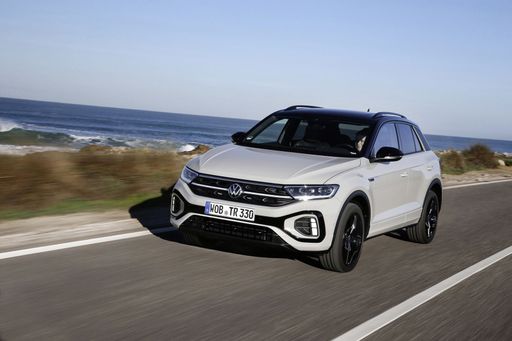 @ Volkswagen AG / VW Media
@ Volkswagen AG / VW Media
VW T-Roc
Suzuki S-Cross
The Suzuki S-Cross is a neatly packaged crossover that puts everyday practicality ahead of showy theatrics, offering a comfortable cabin and predictable handling that suit family life and weekend errands alike. It’s not a headline-grabber, but its sensible packaging, low-key charm and reputation for reliability make it a shrewd choice for buyers who prefer smart value over flash.
details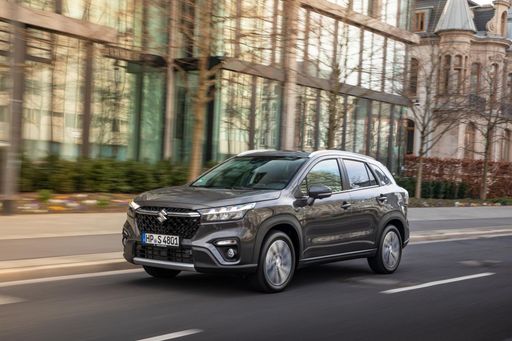 @ Suzuki Motor Corporation
@ Suzuki Motor Corporation
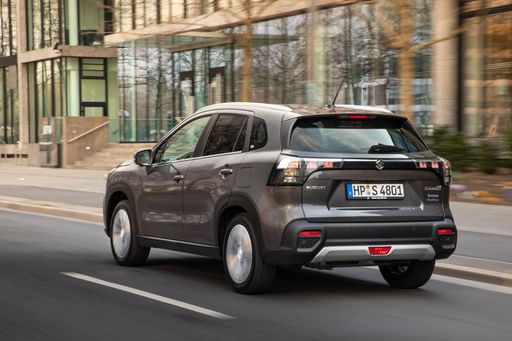 @ Suzuki Motor Corporation
@ Suzuki Motor Corporation
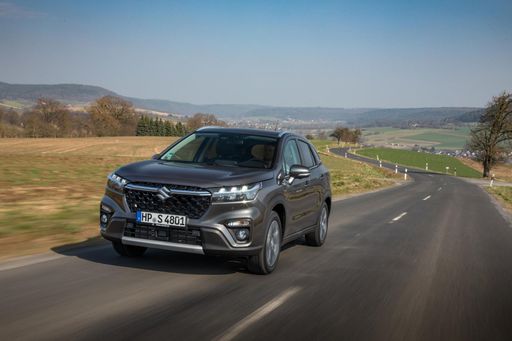 @ Suzuki Motor Corporation
@ Suzuki Motor Corporation
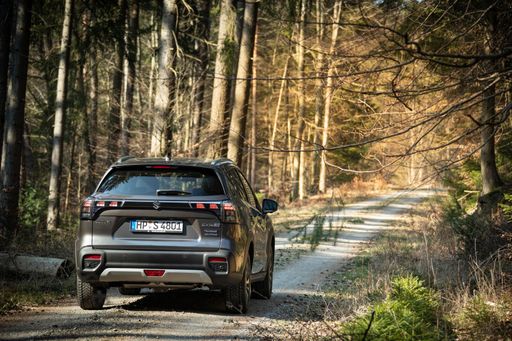 @ Suzuki Motor Corporation
@ Suzuki Motor Corporation
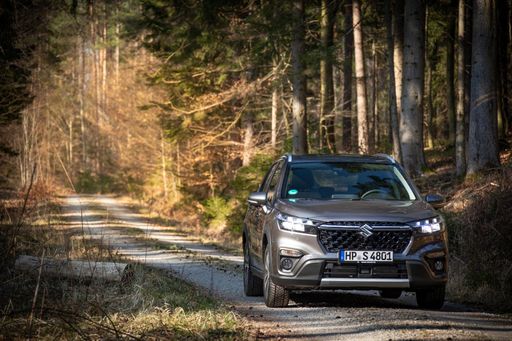 @ Suzuki Motor Corporation
@ Suzuki Motor Corporation
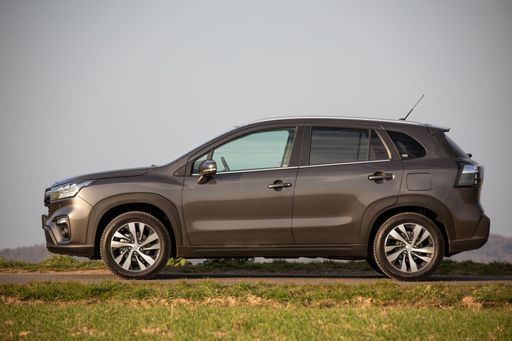 @ Suzuki Motor Corporation
@ Suzuki Motor Corporation
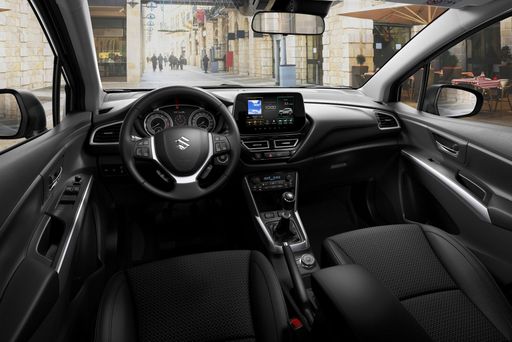 @ Suzuki Motor Corporation
@ Suzuki Motor Corporation
VW T-Roc
The VW T-Roc mixes cheeky, coupe-like styling with the everyday sense and space of an SUV, so it looks fun without sacrificing family sense. It’s a likeable all-rounder with tidy road manners and plenty of personality, ideal if you want a car that’s practical enough for chores but entertaining enough to enjoy.
details @ Volkswagen AG / VW Media
@ Volkswagen AG / VW Media
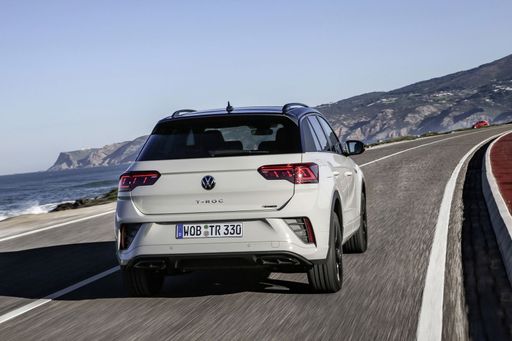 @ Volkswagen AG / VW Media
@ Volkswagen AG / VW Media
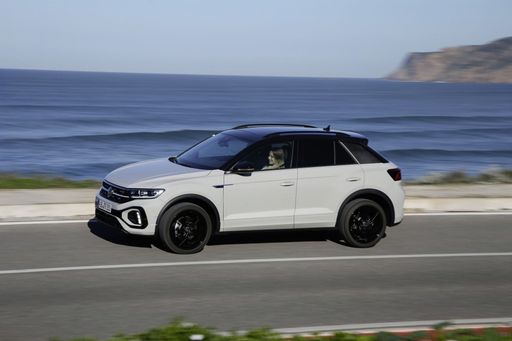 @ Volkswagen AG / VW Media
@ Volkswagen AG / VW Media
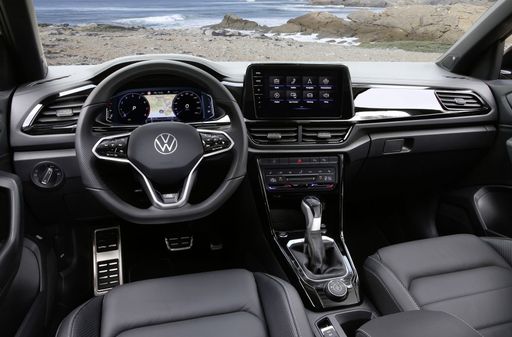 @ Volkswagen AG / VW Media
@ Volkswagen AG / VW Media
 @ Suzuki Motor Corporation
@ Suzuki Motor Corporation
|
 @ Volkswagen AG / VW Media
@ Volkswagen AG / VW Media
|
|
|
|
Costs and Consumption |
|
|---|---|
|
Price
21800 - 34200 £
|
Price
26400 - 38000 £
|
|
Consumption L/100km
5.3 - 5.8 L
|
Consumption L/100km
5.5 - 6.3 L
|
|
Consumption kWh/100km
-
|
Consumption kWh/100km
-
|
|
Electric Range
-
|
Electric Range
-
|
|
Battery Capacity
-
|
Battery Capacity
-
|
|
co2
119 - 138 g/km
|
co2
126 - 143 g/km
|
|
Fuel tank capacity
47 L
|
Fuel tank capacity
50 L
|
Dimensions and Body |
|
|---|---|
|
Body Type
SUV
|
Body Type
SUV
|
|
Seats
5
|
Seats
4 - 5
|
|
Doors
5
|
Doors
2 - 5
|
|
Curb weight
1280 - 1385 kg
|
Curb weight
1465 - 1539 kg
|
|
Trunk capacity
430 L
|
Trunk capacity
284 - 475 L
|
|
Length
4305 mm
|
Length
4271 - 4373 mm
|
|
Width
1785 mm
|
Width
1811 - 1828 mm
|
|
Height
1580 mm
|
Height
1527 - 1573 mm
|
|
Max trunk capacity
1230 L
|
Max trunk capacity
1350 L
|
|
Payload
395 - 405 kg
|
Payload
368 - 515 kg
|
Engine and Performance |
|
|---|---|
|
Engine Type
Petrol MHEV
|
Engine Type
Petrol, Petrol MHEV
|
|
Transmission
Manuel, Automatic
|
Transmission
Manuel, Automatic
|
|
Transmission Detail
Manual Gearbox, Automatic Gearbox
|
Transmission Detail
Manual Gearbox, Dual-Clutch Automatic
|
|
Drive Type
Front-Wheel Drive, All-Wheel Drive
|
Drive Type
Front-Wheel Drive
|
|
Power HP
110 HP
|
Power HP
115 - 150 HP
|
|
Acceleration 0-100km/h
-
|
Acceleration 0-100km/h
8.9 - 12.3 s
|
|
Max Speed
180 - 185 km/h
|
Max Speed
187 - 212 km/h
|
|
Torque
235 Nm
|
Torque
200 - 250 Nm
|
|
Number of Cylinders
4
|
Number of Cylinders
3 - 4
|
|
Power kW
81 kW
|
Power kW
85 - 110 kW
|
|
Engine capacity
1373 cm3
|
Engine capacity
999 - 1498 cm3
|
General |
|
|---|---|
|
Model Year
2025
|
Model Year
2024 - 2025
|
|
CO2 Efficiency Class
D, E
|
CO2 Efficiency Class
E, D
|
|
Brand
Suzuki
|
Brand
VW
|
What drive types are available for the Suzuki S-Cross?
The Suzuki S-Cross is available as Front-Wheel Drive or All-Wheel Drive.
The prices and data displayed are estimates based on German list prices and may vary by country. This information is not legally binding.
